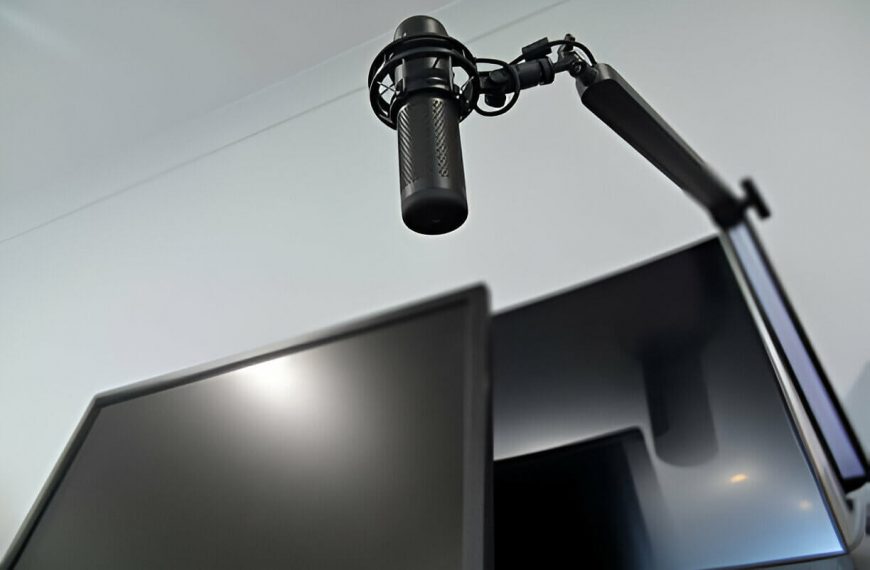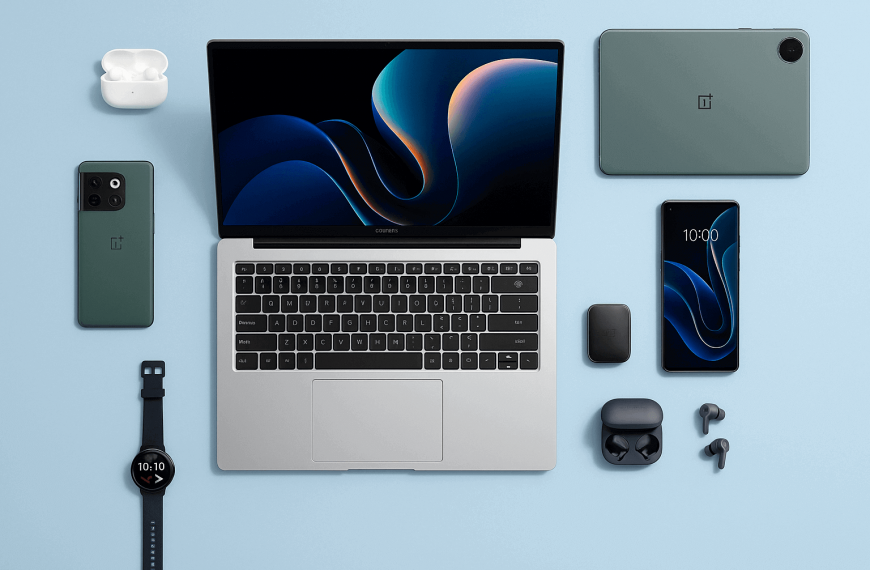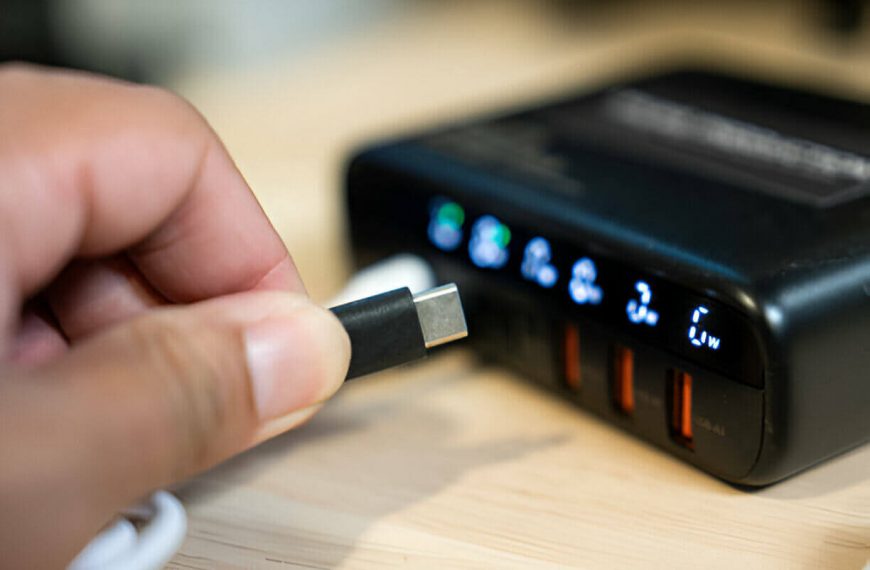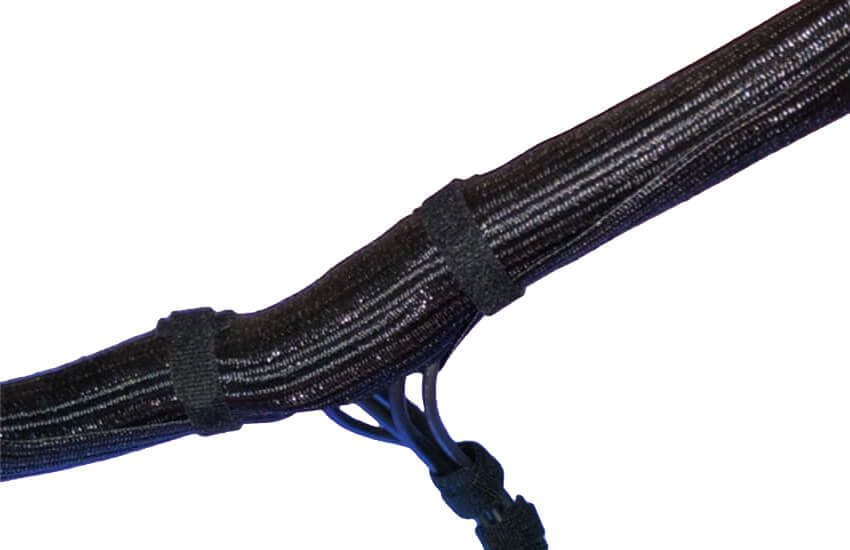Let’s be honest: few things frustrate modern life more than watching your favorite show buffer like it’s on dial-up. If you’ve been yelling at your WiFi while standing in just the right corner of your living room (you know the one, near the plant), the TP-Link Deco X55 might be the thing that finally fixes your digital headaches.
What’s in the Box?
Unboxing this one feels a bit like opening a minimalist first aid kit—for your internet. Inside, you get:
- Three white Deco X55 units (think short, techy soup cans)
- Three power adapters
- One single Ethernet cable
- A quick-start guide that’s actually readable
Just one Ethernet cable? Come on, TP-Link. You’re sending three units—throw us a couple more cords, will ya?
Design That Doesn’t Scream “Tech Overload”
The Deco X55 keeps it clean. Each unit is a small white cylinder with a status LED ring on top. No antennae. No blinking spaceship lights. They just sit quietly and do their job.
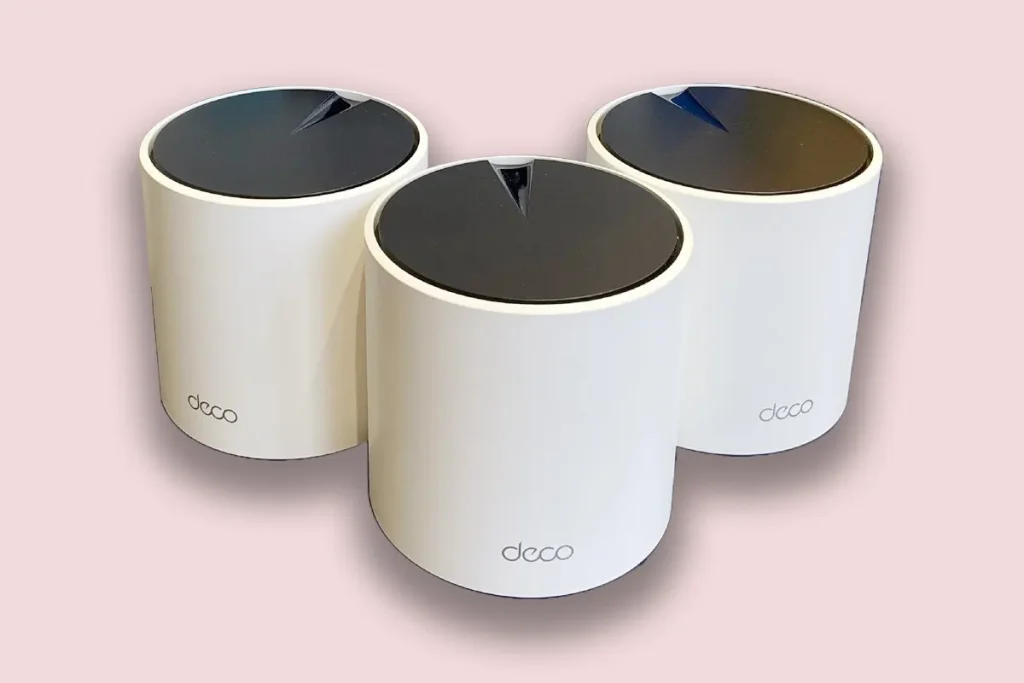
Around the back, you’ll find three Gigabit LAN ports per unit. That’s one more than its sibling, the Deco X60. That extra port might seem small, but it’s gold for anyone trying to wire up multiple consoles, TVs, or smart hubs.
These things blend in. No, they won’t “enhance your living room aesthetic,” but they won’t mess it up either.
Setup: Foolproof or Close Enough
Plug them in, fire up the Deco app, and follow the steps. The app basically babysits you through the whole process. Even if your tech skills end at changing the TV input, you’ll get this done in under 10 minutes.
Account setup is required, which is a small speed bump for some. But once you’re in, adding nodes is painless. It’s just “next, next, done” with a splash of WiFi magic in between.
You can also create a guest network, manage devices, and even use Google Assistant or Alexa to yell at your router like a boss. Just don’t expect it to talk back. It’s not that smart.
Performance: This Is Where the X55 Earns Its Keep
Wireless Performance
On a purely wireless setup, the Deco X55 performs surprisingly well. In testing, I pulled roughly 750 Mbps close to the main router. At around 30 feet (two walls away), it dropped to about 300 Mbps—still solid. Streamed Netflix, gamed online, and uploaded to Google Drive without hiccups.
The satellites? They held up decently. In a two-story home, signal remained strong even in that pesky corner where my old router acted like WiFi was optional.
That said, don’t expect blazing-fast multi-gig speeds across all corners. It’s a dual-band system, so bandwidth gets shared between device traffic and inter-node communication. That’s like splitting your fries with a hungry friend—less for you.
Ethernet Backhaul?
Here’s where things get juicy. If your house is wired (or if you don’t mind running a cable down the hallway like a power user in denial), wired backhaul changes the game.
All three Deco units can be hardwired. Do that, and the full AX3000 potential actually feels… real. Speeds stay high, signal stays consistent, and you forget what buffering even means.
Features: Everything You Need, Some You Might Want
You get:
- Parental controls (pause the internet and watch your kids implode)
- Device priority management (give Netflix dibs over your smart fridge)
- TP-Link HomeShield basic security
Note: the advanced HomeShield features (like threat scanning and more detailed reports) live behind a paywall. You don’t need them, but TP-Link would very much like you to think you do.
The app also shows connected devices, lets you block sketchy ones, and keeps things pretty tidy. No fluff. Just tap and go.
Privacy: Cloud-Connected Life
Let’s talk trust. You must register a TP-Link account to use the system. Your network settings live in their cloud. For some, that’s no big deal. For others, it’s a red flag. TP-Link doesn’t exactly shout about data handling policies.
If you’re the kind who prefers routers that run independently with full local control—this won’t be your cup of tea.
How It Compares to the Competition
- Deco X60: Same wireless speeds, fewer ports
- Deco X55 Pro: Adds 2.5G LAN port, better for multi-gig internet
- Eero Pro 6: More expensive, tri-band, similar app simplicity
- Asus ZenWiFi XT8: Tri-band, USB port, way pricier, more geek knobs
In raw value, X55 hits the sweet spot. Unless you need tri-band or multi-gig, this one covers most homes without breaking the bank.
Who’s It For?
- Anyone fed up with WiFi blackholes in medium-to-large homes
- Households that stream, Zoom, and game simultaneously
- Users who want plug-and-play without a network engineering degree
- Folks open to using TP-Link’s cloud and app ecosystem
Not for:
- Techies wanting advanced settings, local DNS, or VPN
- Privacy hawks avoiding cloud-connected infrastructure
- Households expecting tri-band performance for gigabit-level wireless backhaul
Room for Improvement
Let’s not sugarcoat it. Some things could be better:
- No dedicated backhaul band (shared bandwidth hurts if you go wireless-only)
- Subscription for advanced features feels a little sneaky
- One Ethernet cable? Still salty about that.
- No web UI. You must use the app.
Final Verdict: Should You Buy It?
If you’re wiring your mesh system or just want reliable coverage without overthinking it, the Deco X55 delivers more than it promises.
It won’t turn your home into a networking utopia, but it gets the job done—quietly, quickly, and without tantrums.
Just remember: it’s not magic. Bad placement or going fully wireless with walls in the way? You’ll still feel the pinch.



